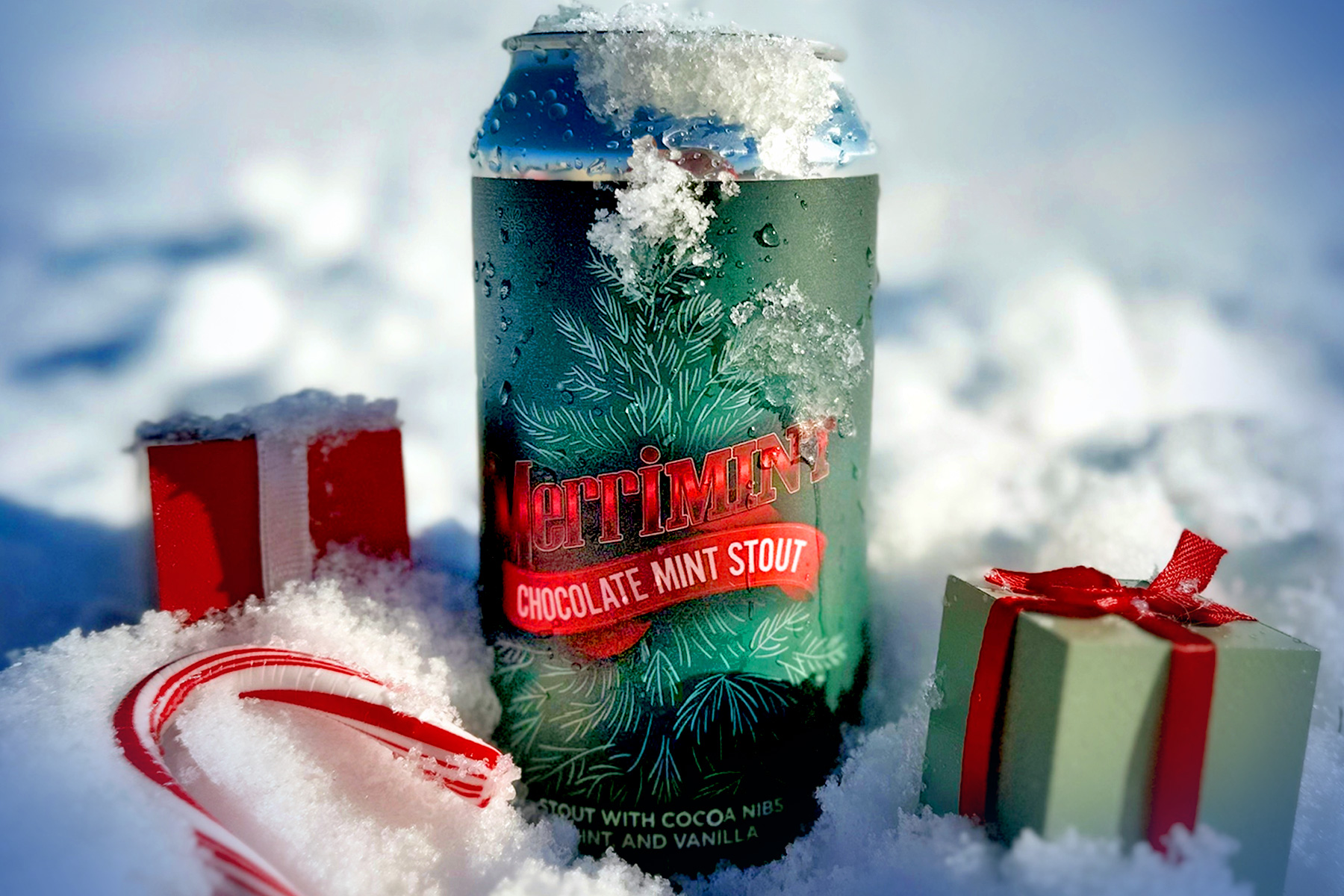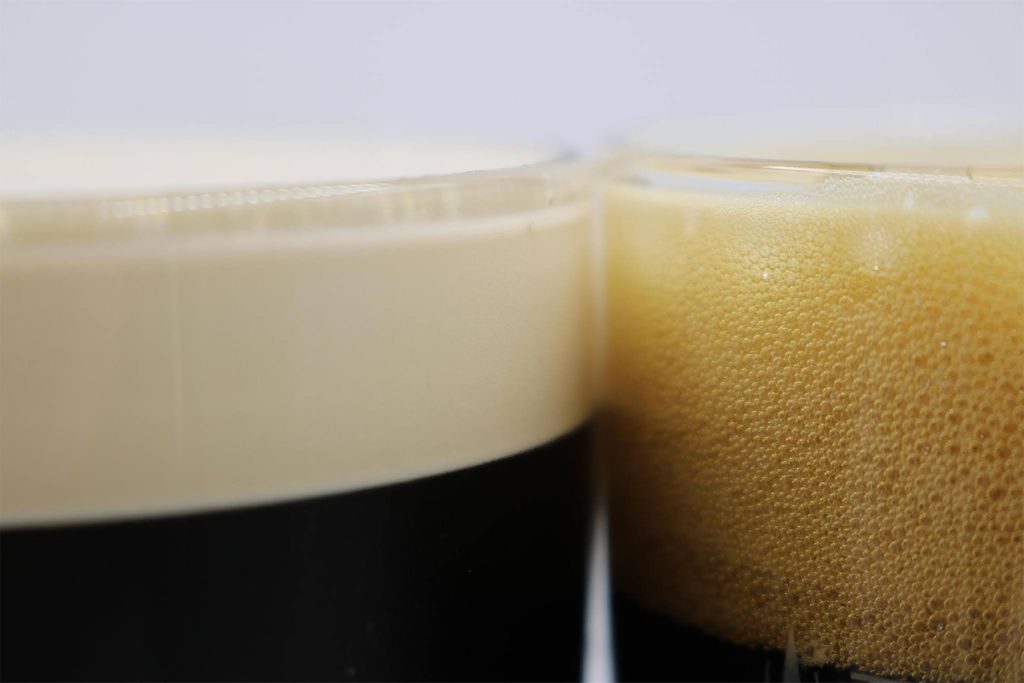
It’s wintertime in Wisconsin and everything is blanketed in a layer of beautiful, white snow. In the low, late-day sun, the snow shines like a disco ball with sparkles in a rainbow of colors. When the snow, unfortunately, melts, turning into clear, colorless water, what’s beneath is once again unveiled. Snow is simply frozen water, ice, which is also clear and colorless. How is it that something clear and colorless appears white? The answer is the structure.
Everyone knows that beer, even the world’s most famous dark beer, Guinness, is properly topped with beautiful, white foam. The patient ones know that if you leave the foam to collapse, it turns back into colored beer. How can something that is colored turn into something white? The answer is, again, the structure.
In truth, beer foam isn’t exactly white, it can exhibit some subtle colors that are tints of the beer that create it. In contrast to the beer it sits atop, it is much lighter and often appears white because of this juxtaposition, an effect exhibited in the coincidently named, “White’s Illusion”.
What determines the tint of beer foam, whether the foam on that dark brown beer is light brown or tan? This is a function of the beer color itself and the structure of the foam.
Beer’s color is a result of light passing through the beer and some of the wavelengths of light, especially blue light, being absorbed by the nutritious compounds in beer from the malt. Depending on the wavelengths absorbed and the strength of the absorption, beer can exhibit colors of yellow, orange, red, brown, or black. We’ve written about this before in the following blogs: Predicting Beer Color Based on Formulation and Defining Wort Colors: Red Malts VS. Black Malts. The foam color will be a tint (or lighter version) of the original beer’s color.
What determines how light the tint will be? Well, this is where the structure of the foam comes in. Beer foam appears lighter because it is almost impenetrable to light. This is due to how light behaves at the interface between air and beer and the bubbles in beer.
Let’s start at the surface of the beer or foam. We are familiar with the reflection of light off water, for example, when we see reflections in still puddles or lakes.
What happens to light when it hits the surface of beer?
Optically, beer behaves a lot like water. A portion of the light that hits the beer at a shallow angle skips right off the surface like a skipping stone and is reflected. Light hitting the water at a steeper angle goes almost completely into the water (like a poorly thrown skipping stone). Just as when looking at still water, you see a strong reflection of distant objects, but when looking straight down, you see only a weak reflection and see into the water below you. Adding up this light over all the possible angles, roughly 15% of light is reflected at the surface of the beer. Read more about the reflection and refraction here: https://mammothmemory.net/physics/refraction/part-reflection-part-refraction/part-reflection-part-refraction.html

I can’t see my reflection in the foam.
Foam is made up of many irregular bubbles, because of this, unlike a still lake, the surface of foam isn’t smooth. The light coming from objects is still reflected at the surface, however, the direction of the reflected light is somewhat random depending on the angle that the light encountered at the uneven interface. Think of the reflection from rough water or a highly scratched mirror. This is called “Diffuse Reflection”.
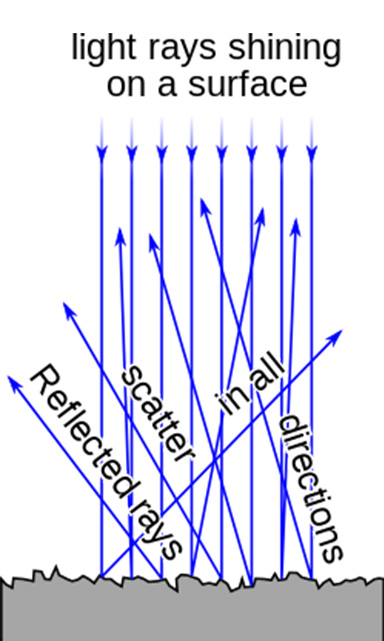
Most of the light goes into the beer.
What about the other 85% of the light…well, it doesn’t get very far. It soon encounters a bubble, and light doesn’t enter bubbles very well. When light approaches the air/water surface from the waterside, there is again a partial reflection, however, the reflection is much stronger and more widespread. In fact, for shallow angles of 40% or less, ALL of the light is reflected back into the water. The surface behaves as a mirror in a phenomenon known as “Total Internal Reflection”.
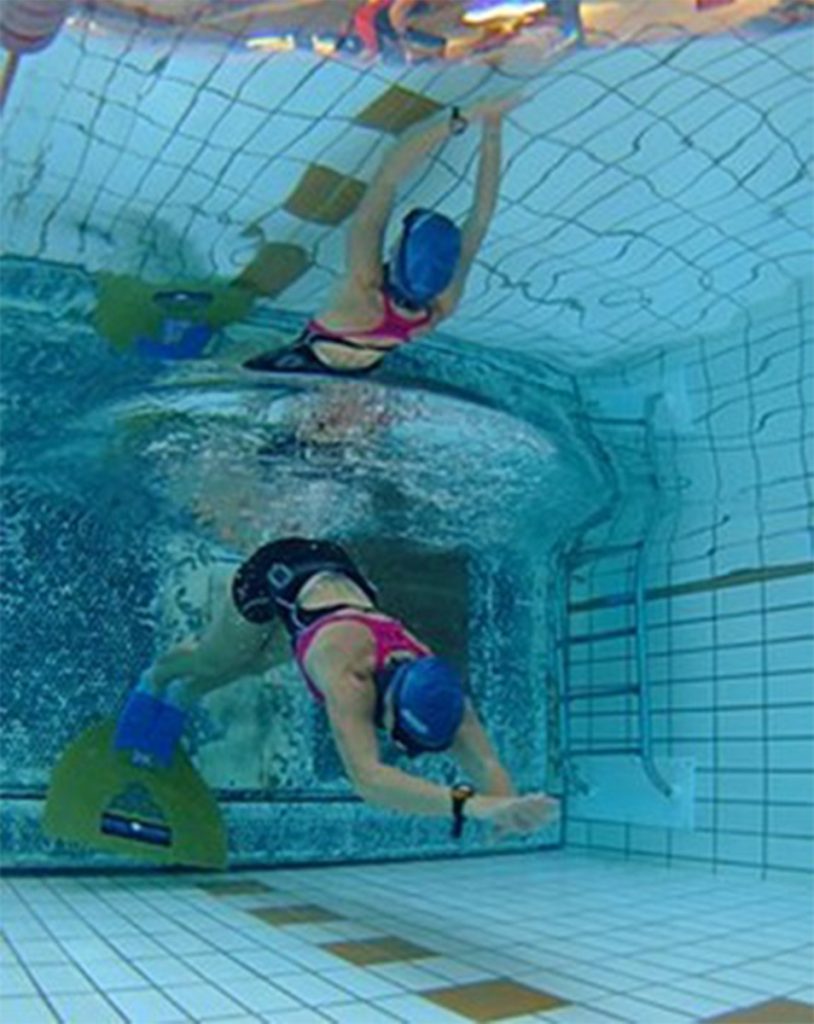
Light that does partially cross the water-to-air interface into the bubble is diffracted, resulting in the bending of the path of light away from its original direction. This light travels through inside the bubble where it encounters another gas-water interface on the other side. Some of this light is reflected and bounces around to eventually exit the bubble. The remainder is almost completely diffracted again away from its original path. Ray tracing of light incident on a bubble shows the extent of this. Of all the light that originally hits the bubble, only about 1% continues through the bubble in its original direction.
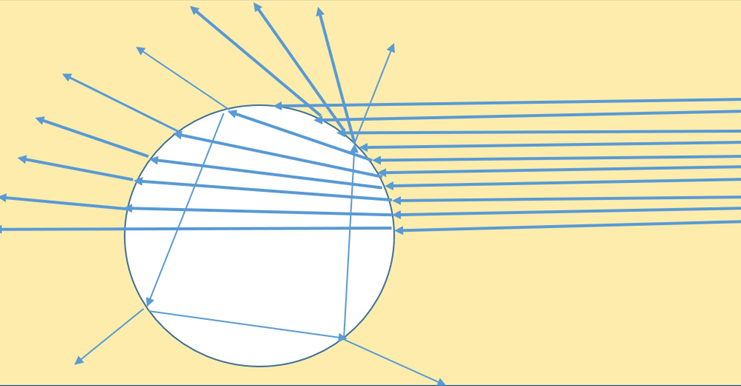
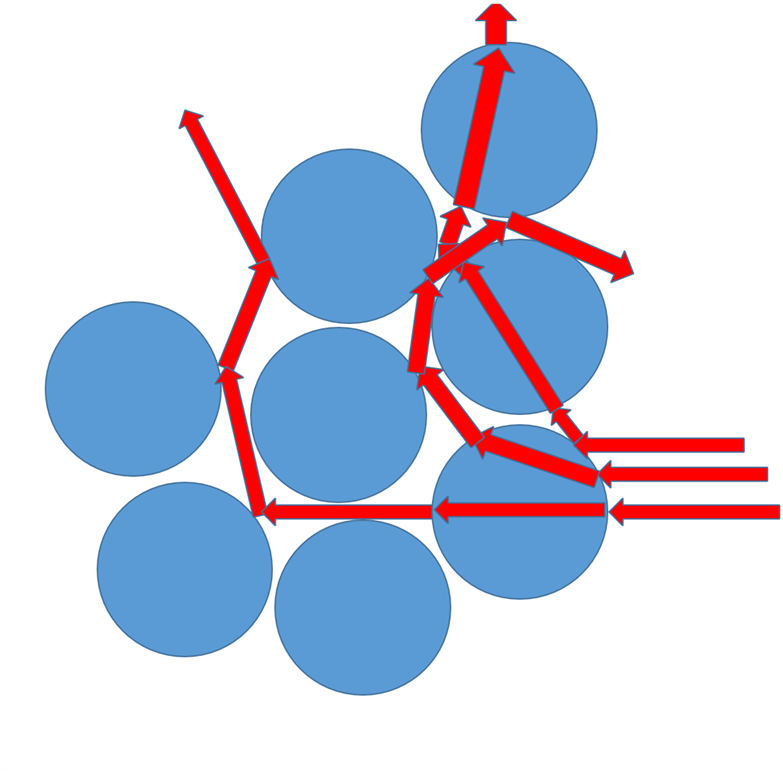
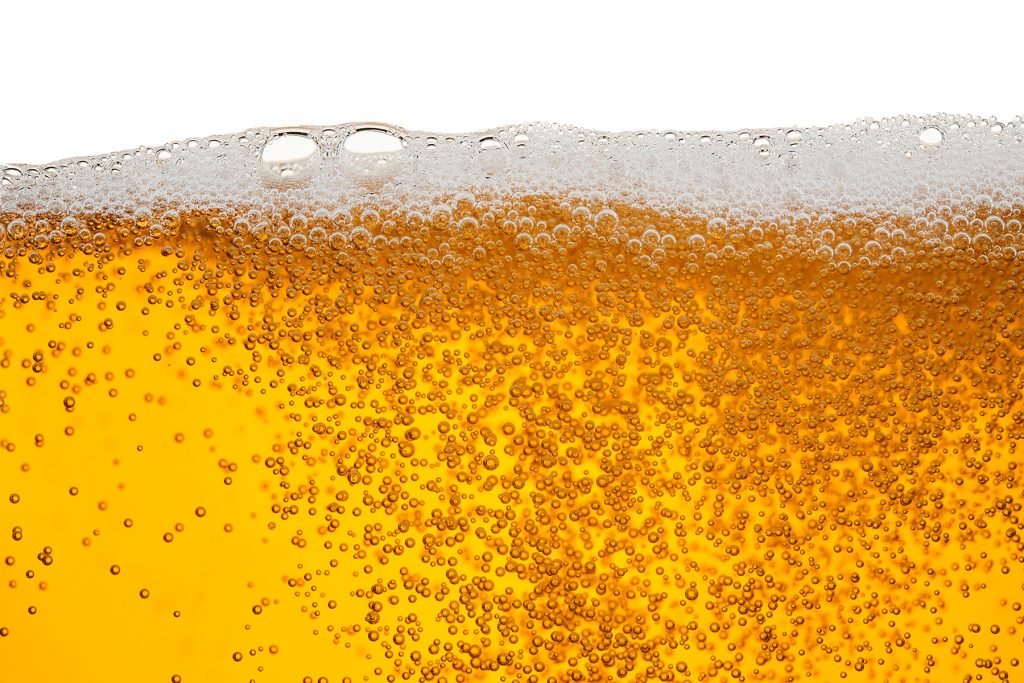
The bubbles in a glass of beer act like tightly packed disco balls reflecting the light in many directions. Ray tracing of multiple bubble foam shows how within only a few bubbles the light is completely redirected and effectively blocked by the foam. Light travels through some of the beer in between bubbles and eventually exits the foam. This light will take on the color of the base beer, but because of how little beer it has interacted with, it will be much lighter than the beer in the glass.
It only takes a few sequential bubbles to block the light. The smaller the bubbles, the shorter the distance the light travels, and the less it interacts with the beer. And thus, the lighter color in appearance, the foam. Additionally, the wetness of the foam, or the amount of beer between the bubbles, increases the ability of the light to interact with the beer before exiting. This leads to a darker foam.
Below is a picture of two foams generated from the same beer. The left foam is the classic “nitro” foam and is a stable dry foam with very small bubbles. The right foam is the same exact beer but traditionally carbonated and poured. Notice how the wetness and large bubble size allow for more interaction and a darker foam.
The nitro foam appears almost white because it has effectively blocked all the light from entering the beer and scattered it back at the eye, like a million tiny disco balls.

Foam has a dark side.
In Wisconsin, if you’ve ever been in an igloo or had your snow fort collapse on you, you know that inside a thick layer of snow, it’s completely black…light doesn’t penetrate. The same is true of foam. If you could somehow put yourself in the middle of a thick Guinness foam, you would be in the dark.
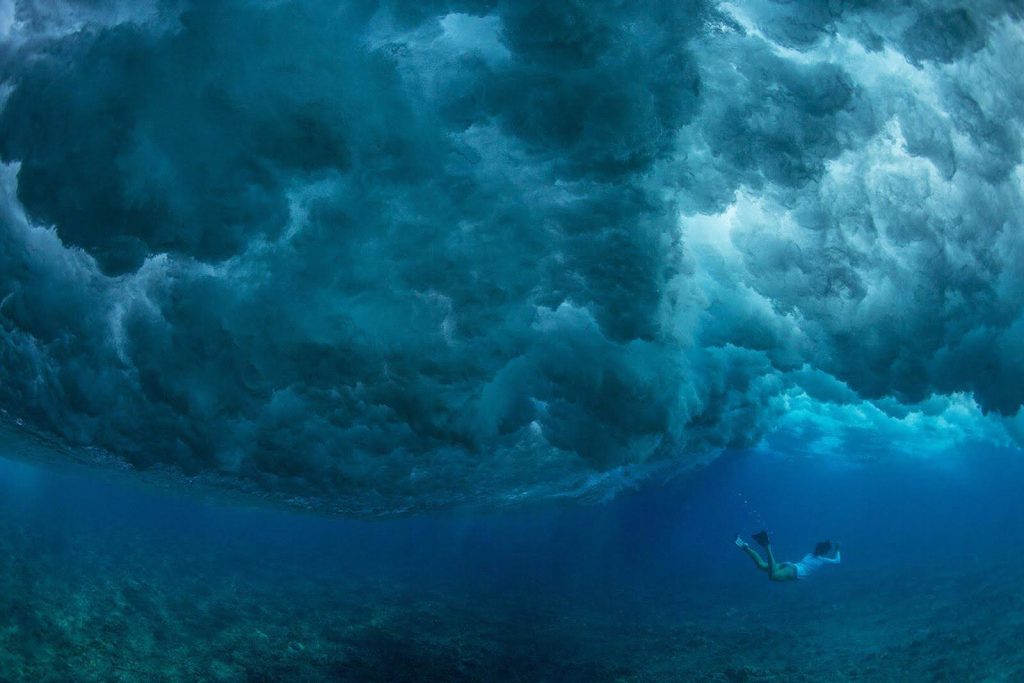
Take away life lessons on foam.
So, the color of foam is a much lighter version of the liquid that it’s made up of. How light the foam is will depend on how dense the foam is and how small the bubbles are. Because of its structure, foam is almost impervious to light. If someone is about to shoot you with a laser…hold up a freshly poured beer and maybe no one will get hurt (use the foamy part). 😉
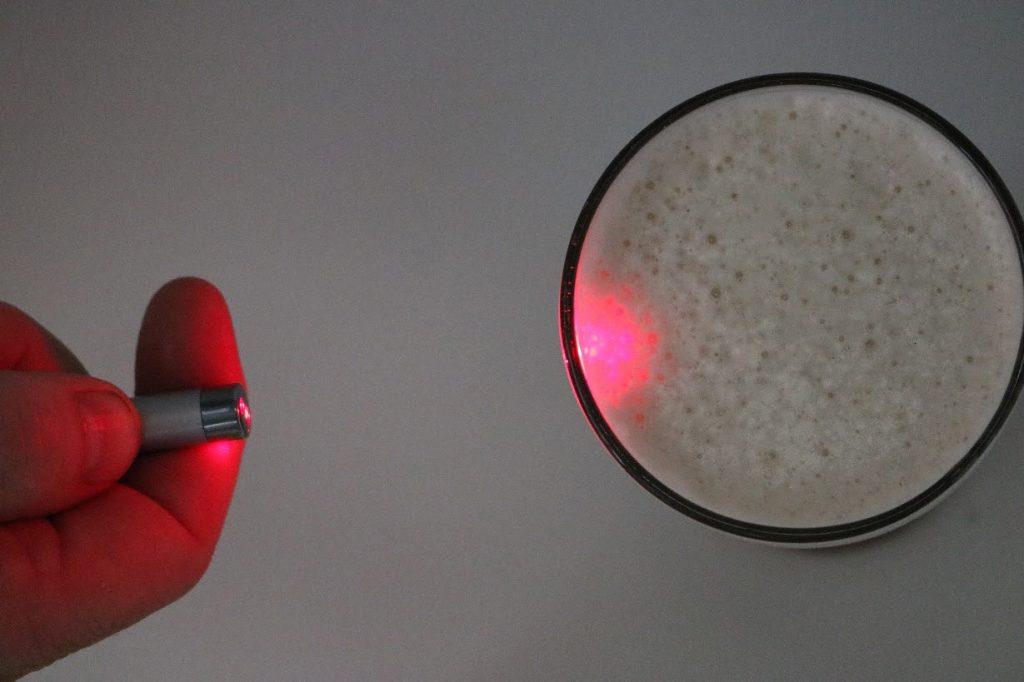
While pursuing a degree in fine arts, Bob Hansen attended a class on color and light from award-winning professor Robert Greenler, who taught him how to find rainbows, halos, and glories and the magic of the light around him. After this, he pivoted to physics and has been working as a brewer and scientist for over 30 years.


